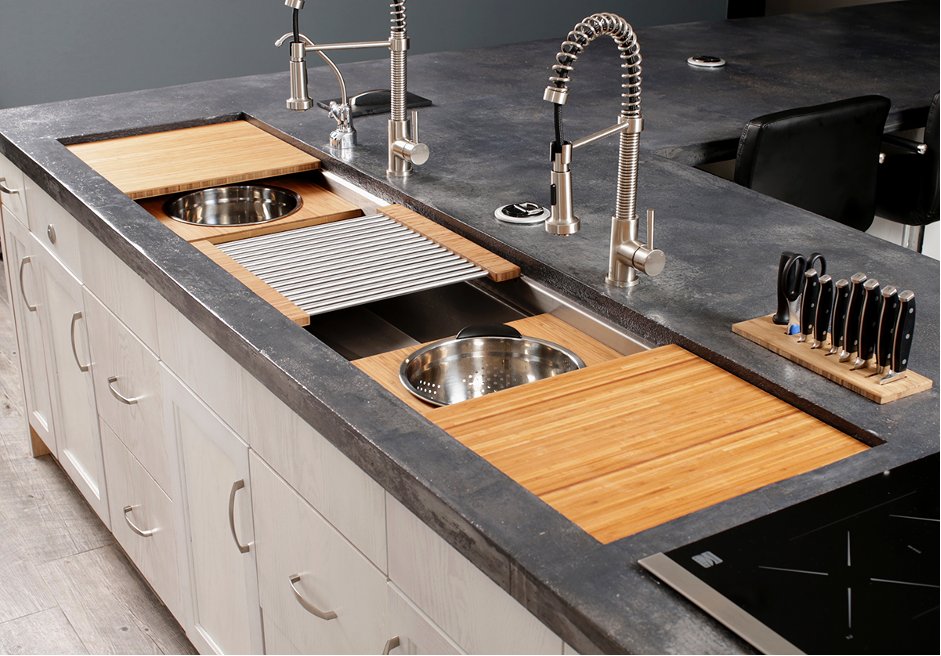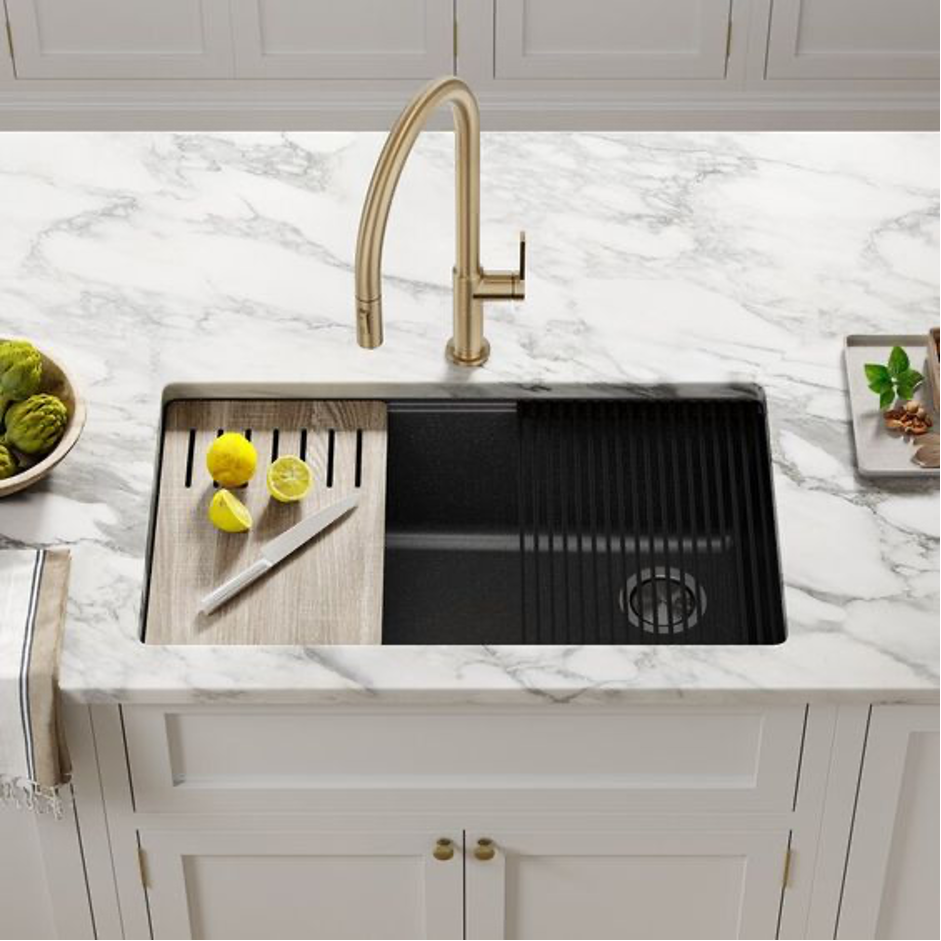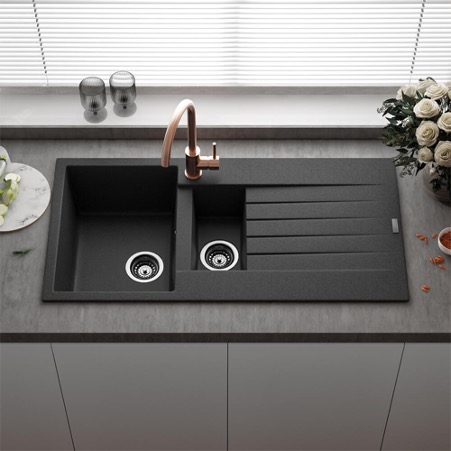
Choosing the right sink for your kitchen is a crucial decision that affects both functionality and aesthetics. Two popular options are undermount and top-mount sinks, each with its own set of advantages and considerations. In this blog, we will explore the differences between these two types of sinks, their benefits and drawbacks, and help you determine which one is right for your kitchen.
Understanding Undermount Sinks

Undermount sinks are installed beneath the countertop, creating a seamless look with the counter surface. The rim of the sink is mounted underneath the countertop, making the transition between the sink and the counter smooth and visually appealing.
Benefits of Undermount Sinks
1. Sleek Appearance: Undermount sinks offer a clean, modern look that enhances the aesthetic appeal of any kitchen. The seamless design eliminates the rim, providing a streamlined appearance.
2. Easy Cleaning: With no exposed rim, crumbs and spills can be wiped directly from the countertop into the sink, making cleanup quick and easy.
3. Increased Counter Space: Since the sink is mounted underneath the counter, you gain a bit of extra counter space, which can be valuable in smaller kitchens.
4. Customization: Undermount sinks are available in a variety of materials and styles, allowing for greater customization to match your kitchen decor.
Drawbacks of Undermount Sinks
1. Installation Complexity: Installing an undermount sink can be more complex and costly. It requires professional installation and precise fitting to ensure it is properly secured.
2. Support Requirements: The countertop material needs to be strong enough to support the weight of the sink and the contents within it. This usually means opting for materials like granite, quartz, or solid surface.
3. Higher Cost: Undermount sinks tend to be more expensive, both in terms of the sink itself and the installation process.
Understanding Top-Mount Sinks

Top-mount sinks, also known as drop-in sinks, are installed by placing the sink into a hole cut in the countertop. The rim of the sink rests on the countertop surface, securing it in place.
Benefits of Top-Mount Sinks
1. Ease of Installation: Top-mount sinks are generally easier and less expensive to install. They can often be installed by DIY enthusiasts without the need for professional help.
2. Compatibility: These sinks are compatible with a wider range of countertop materials, including laminate and tile, which might not support undermount sinks.
3. Cost-Effective: Top-mount sinks are usually more affordable than undermount sinks, making them a budget-friendly option for many homeowners.
4. Replacement Flexibility: If you need to replace the sink in the future, a top-mount sink is easier to remove and replace without damaging the countertop.
Drawbacks of Top-Mount Sinks
1. Cleaning Challenges: The exposed rim of a top-mount sink can collect dirt and grime, making it harder to clean compared to undermount sinks.
2. Aesthetic Considerations: The visible rim can interrupt the smooth flow of the countertop, which may not be as visually appealing as the seamless look of an undermount sink.
3. Reduced Counter Space: The rim of a top-mount sink takes up a bit of counter space, which might be a concern in smaller kitchens.
Making the Right Choice for Your Kitchen
When deciding between an undermount and a top-mount sink, consider the following factors:
1. Kitchen Style and Aesthetics: If you prefer a sleek, modern look, an undermount sink is the way to go. For a more traditional or budget-conscious approach, a top-mount sink might be more suitable.
2. Countertop Material: Ensure your countertop material can support the type of sink you choose. Undermount sinks require sturdy materials like granite or quartz.
3. Budget: Consider your budget for both the sink and installation. Top-mount sinks are generally more cost-effective, while undermount sinks might require a higher investment.
4. Maintenance Preferences: Think about your cleaning habits and preferences. If easy cleaning is a priority, an undermount sink’s seamless design might be more appealing.
5. Installation and Replacement: If you plan to install the sink yourself or anticipate future replacements, a top-mount sink’s simpler installation process could be advantageous.
Both undermount and top-mount sinks have their own unique benefits and drawbacks. The right choice for your kitchen depends on your individual needs, preferences, and budget. By considering factors such as aesthetics, countertop material, budget, maintenance, and installation, you can make an informed decision that will enhance the functionality and beauty of your kitchen for years to come.
